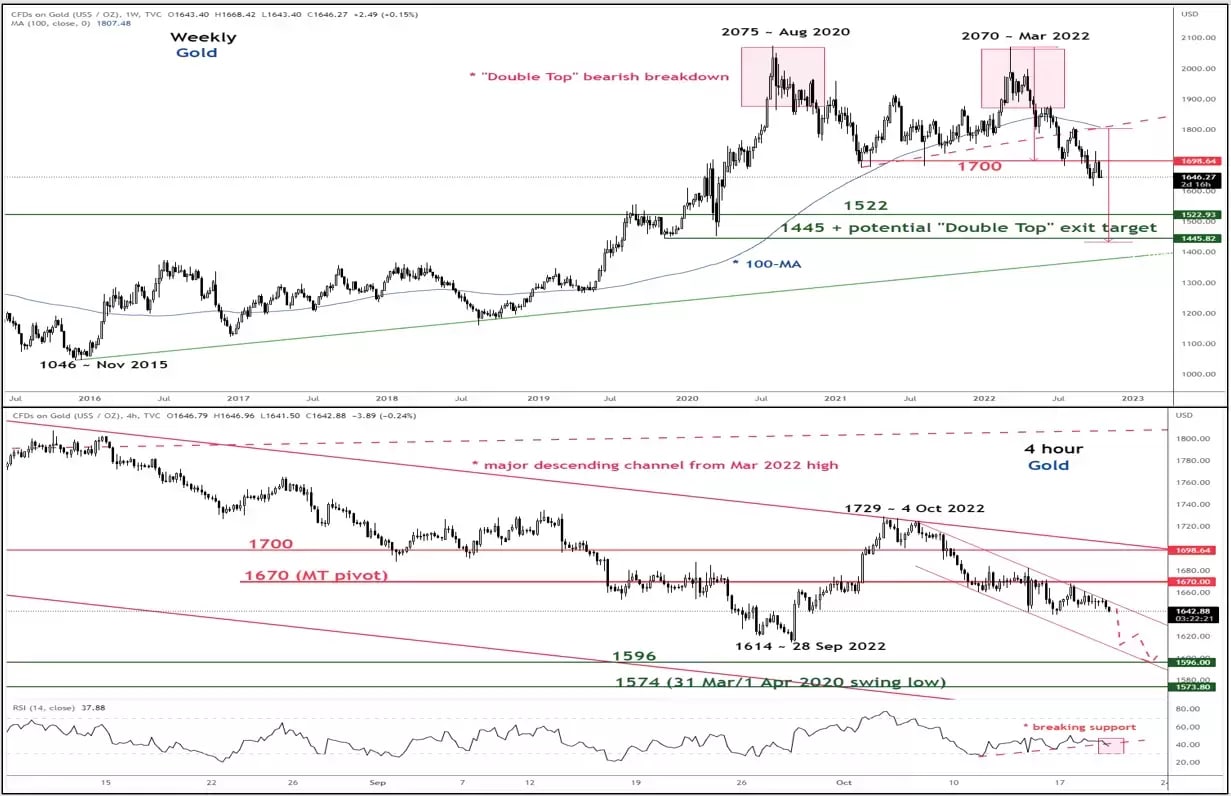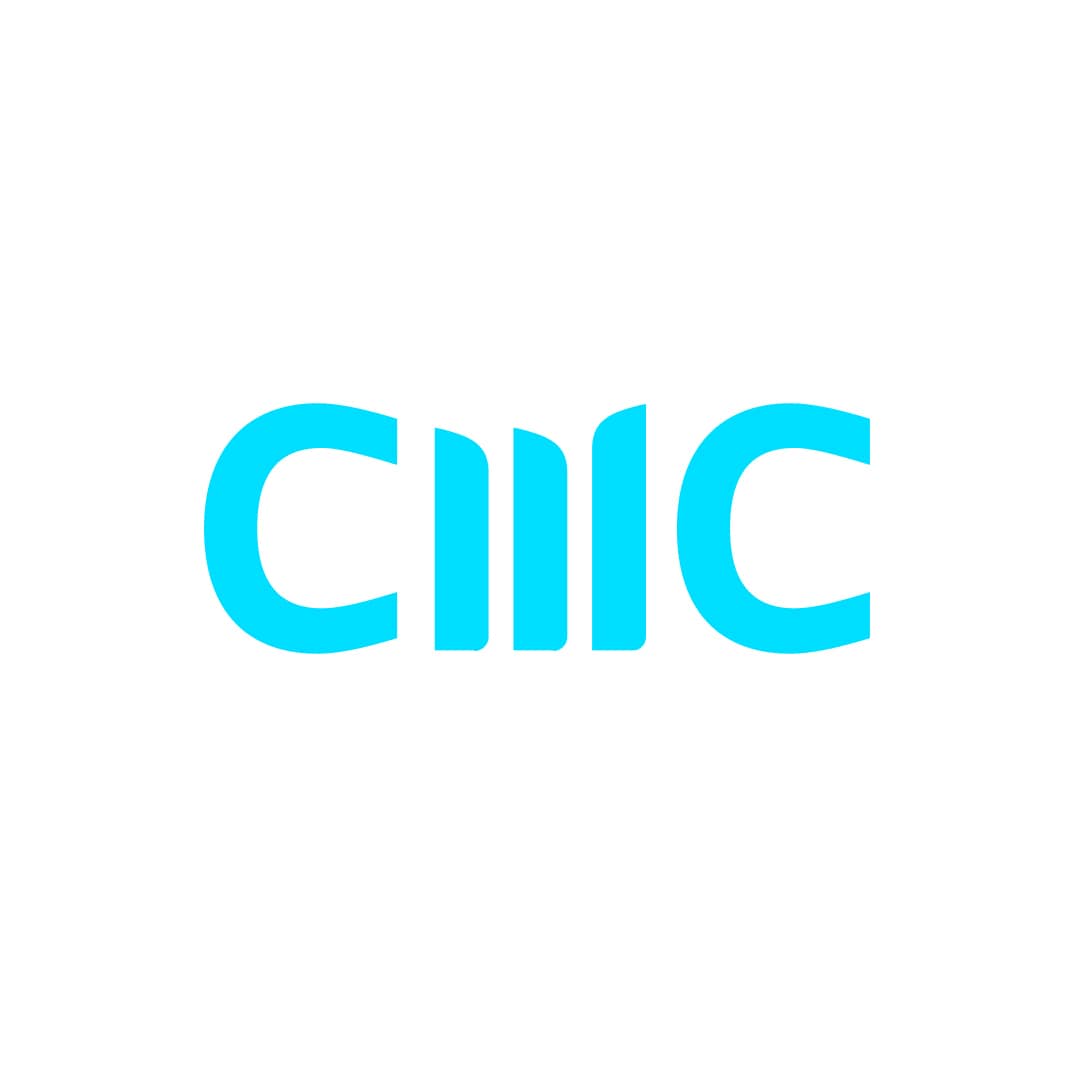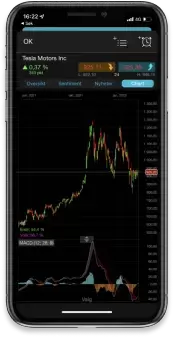The price of gold against the dollar tumbled to a two-year low this month, falling 10.9% in the year to 19 October.
Kelvin Wong, a market analyst based in Singapore, explains why macroeconomic factors and certain technical indicators are signalling a bearish stance on the precious metal.
“The continuation of hawkish rhetoric from Federal Reserve officials could put indirect downward pressure on the price of gold via the increased US Treasury yield,” FX Week’s top forecaster for 2018 and 2019 says.
The president of the Federal Reserve Bank of Minneapolis, Neel Kashkari, said on 18 October that if inflation continues to rise, he doesn’t see why rates shouldn’t reach 4.75% or higher by 2023. The US CPI rose 0.4% in September, indicating that inflation is still rife in the US.
The metric that Wong feels is most relevant to the price of gold is the expected 10-year real yield, which is the nominal 10-year US Treasury bond yield minus the expected 10-year inflation rate.
“Rates have increased pretty steeply this year,” Wong points out. “Right now, the expected 10-year real yield is close to a 12-year-plus high”, which is adding “downside pressure on the price of gold because of the increased opportunity costs of holding it”, since no interest is accrued by doing so. He calls that an intermarket correlation factor, and it is proving to be a drag on the price of gold.
A strong dollar
Furthermore, the US dollar is having a strong year, driven mainly by this hawkish approach from the Fed. The US dollar index [USDX] is up 18.1% year-to-date as of its close on 19 October. Given that gold is typically quoted by its cost in dollars, the fall in the price of gold is mainly driven by the dollar’s strong run (the stronger the dollar is, the more gold it can buy).
On the other hand, Wong admits that if we look at gold quoted against the Japanese yen or sterling, it’s trading in positive territory. Japan is stubbornly sticking to a 0% interest rate policy, yet there is still “positive performance value,” says Wong.
Meanwhile, political turmoil in the UK has tanked the value of sterling, meaning that the price of gold in sterling has risen. “There could be a potential political crisis in the UK because the leadership itself is uncertain about the direction it wants to go in relative to the market. The Bank of England is in favour of an interest rate hike, but on the other hand, you’ve got a bit of uncertainty on the political front, which gives us a neutral view of gold on a GBP basis.”
Gold’s bearish patterns
Inflation was driven, in the first instance, by the Russian invasion of Ukraine in February. To begin with, the inflationary impacts of the war – namely the consequent shortage of oil and gas supply that increased global energy prices – pushed the price of gold upwards, reaching a peak of $2,072 per ounce on 8 March.
However, the Fed’s tactic for curtailing this inflation led to the current bearish run in the price of gold. A run which technical indicators suggest could be yet to bottom.

“Since the October high [of $1,728], gold has been trading within a minor short-term descending triangle,” Wong explains. From a trading perspective, Wong is paying attention to this trend because there is no sign of it bottoming in the short term.
As a self-proclaimed “short-term swing trader”, Wong talks about the point at which he’ll be ready to take on a bearish perspective on the precious metal. “We're looking at $1,655 as my short-term pivotal resistance,” he says.

Over the long-term, Wong points to “a major bearish down-trend phase” similar to what happened in early July, which he says had “double bearish breakdown potential”.
The $1,670 mark represents a “key medium-term pivotal resistance for a further potential bearish impulsive down move sequence towards the next support at $1,596 with a maximum limit set at $1,574,” according to Wong. “On the flip side, a clearance with a four-hour close above $1,670 negates the bearish tone for a corrective rally to test the $1,700 major resistance.”
He’s got his eye on signs of any bottoming “I’ll be watching at the $1,445 level to see if there’s any sign of a potential bullish reversal taking shape” in the hope that might “exhaust this major downtrend”.
Disclaimer: CMC Markets is an execution-only service provider. The material (whether or not it states any opinions) is for general information purposes only, and does not take into account your personal circumstances or objectives. Nothing in this material is (or should be considered to be) financial, investment or other advice on which reliance should be placed. No opinion given in the material constitutes a recommendation by CMC Markets or the author that any particular investment, security, transaction or investment strategy is suitable for any specific person. The material has not been prepared in accordance with legal requirements designed to promote the independence of investment research. Although we are not specifically prevented from dealing before providing this material, we do not seek to take advantage of the material prior to its dissemination.







